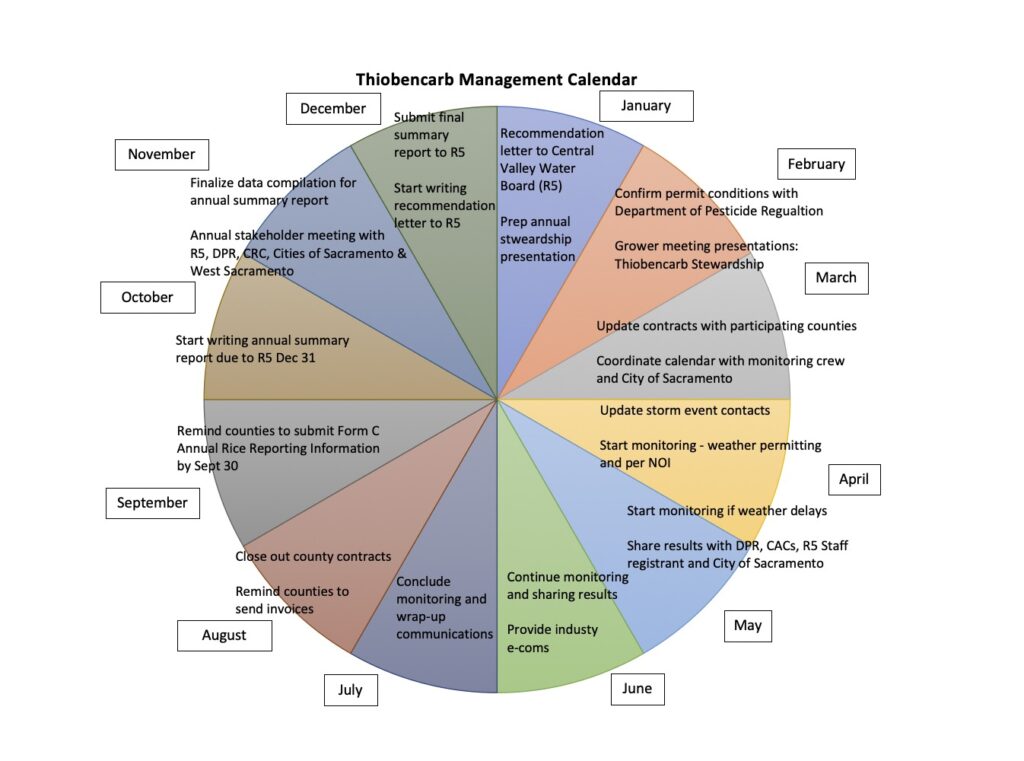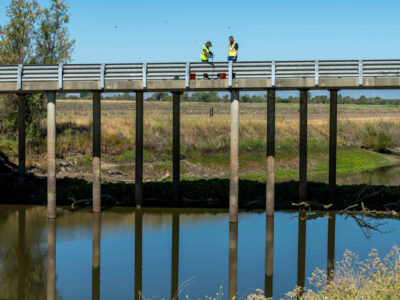The information in this twelve-month chart is just a snapshot of the management necessary to maintain thiobencarb. At the CRC, we work to provide information on the management practices, stewardship updates and the monitoring results because product maintenance does not end with the last application, cumulation of all water-holds or the collection of the final water sample. Every person using, applying and recommending thiobencarb takes ownership in successful management of the herbicide. Management requires constant diligence and coordination with the growers, registrants, pilots, applicators, pest control advisers, county agricultural commissioners and state regulators to assure continual usage of this important herbicide.

Chart key: R5 = Central Valley Water Board; DPR = Department of Pesticide Regulation; CACs = County Agricultural Commissioners; NOI = notice of intent
For questions and additional information, please contact Roberta Firoved, Industry Affairs Manager at rfiroved@calrice.org or (916) 206-5039.



